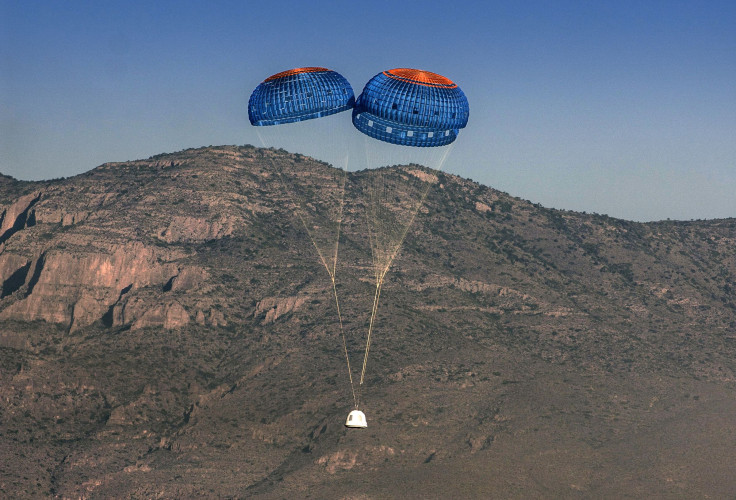Blue Origin’s New Shepard In-Flight Escape Test Live Stream: What, Where, When To Watch

Although humankind has been venturing into space beyond Earth’s atmosphere for over 50 years already, spaceflight is still not a foolproof technology, as evidenced by the Columbia disaster in 2003 or the SpaceX Falcon 9 explosion a month ago. In the latter case, the spacecraft was unmanned and no one was injured even at the Florida launchpad where the accident occurred, but it still points to the need for proper escape mechanisms in any vessels that have human occupants within.
This is perhaps more true for Jeff Bezos’ space venture, Blue Origin, which hopes to make space tourism a real thing in the near future. Not many would be enthusiastic for a ride if its rockets didn’t have safety features, especially an escape pod.
On Wednesday, the company will test the in-flight escape system on its New Shepard rocket, test it says is its toughest so far.
“We’ve already tested our pusher escape system, including many ground tests and a successful pad escape test, but this upcoming flight will be our toughest test yet. We’ll intentionally trigger an escape in flight and at the most stressing condition: maximum dynamic pressure through transonic velocities,” Bezos said.
The rocket booster to be used in Wednesday’s test has already made four successful vertical landings after crossing the Karman line, the boundary between Earth's atmosphere and outer space. However, it is likely to be destroyed during the upcoming test, Bezos said, since it was not designed to survive such a test. There is still some chance the booster will survive, in which case it will be retired and put on display in a museum. If it doesn’t, “it will still have most of its propellant on board at the time escape is triggered, and its impact with the desert floor will be most impressive.”
The system design of the escape system is based on learnings from Apollo, Mercury and Soyuz rockets, but differs from them fundamentally. While they had an escape motor mounted on a tower above the capsule that worked by pulling the capsule away from a malfunctioning booster, New Shepard places the escape motor under the capsule and works by pushing it instead of pulling. There is no jettison operation either.
Once an anomaly is detected, the escape motor moves the capsule out of the booster’s path and then parachutes deploy that allow it to land safely.
The test was originally scheduled for Oct. 4 but was pushed to Oct. 5 due to bad weather.
Weather no-go for tomorrow’s New Shepard #InFlightEscape test. Webcast now Wednesday 10:45 am ET. #GradatimFerociter
— Blue Origin (@blueorigin) October 3, 2016
Blue Origin will live-stream the test, starting at 10:45 a.m. EDT, and it can be seen on its website.
© Copyright IBTimes 2025. All rights reserved.




















